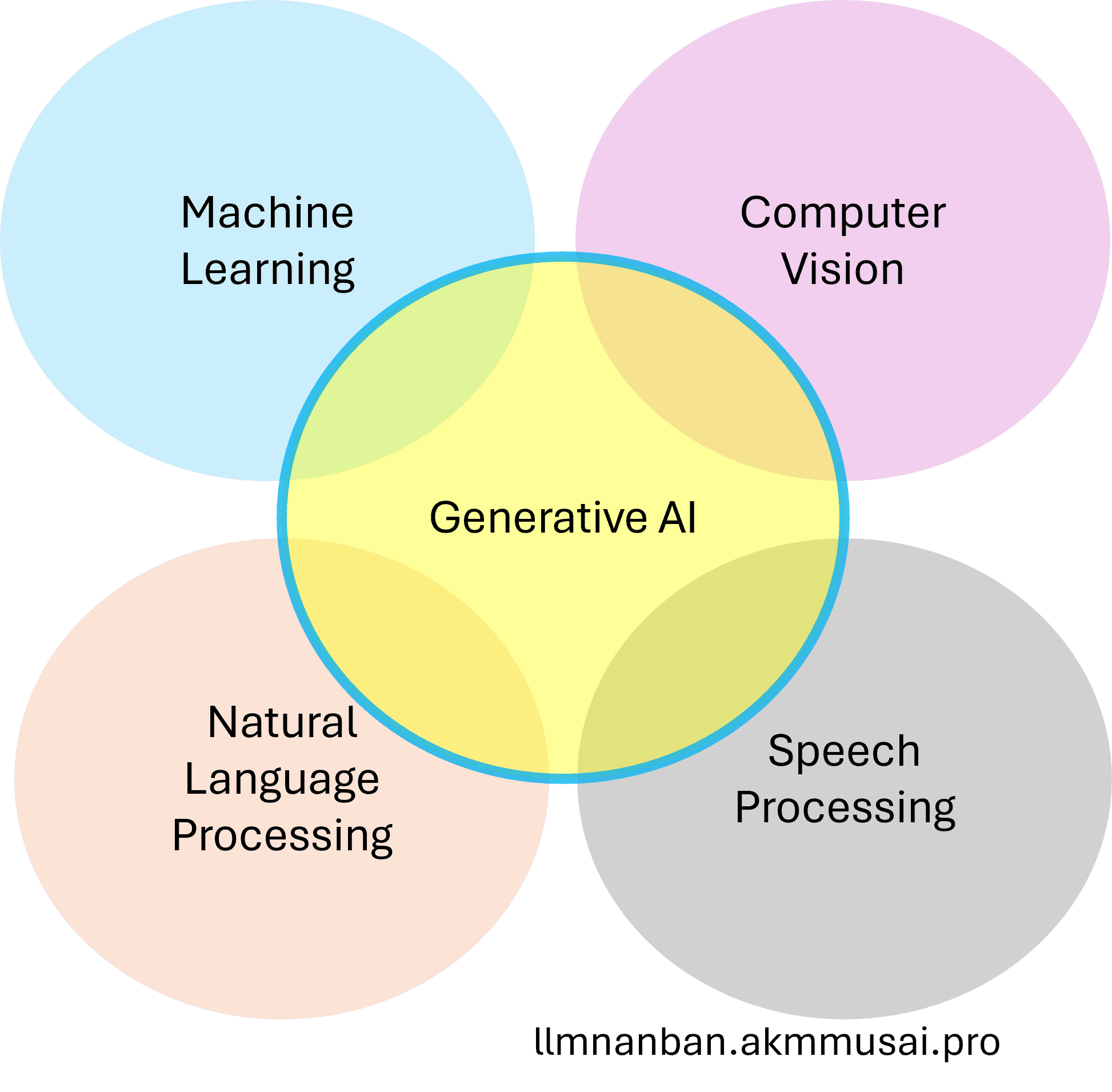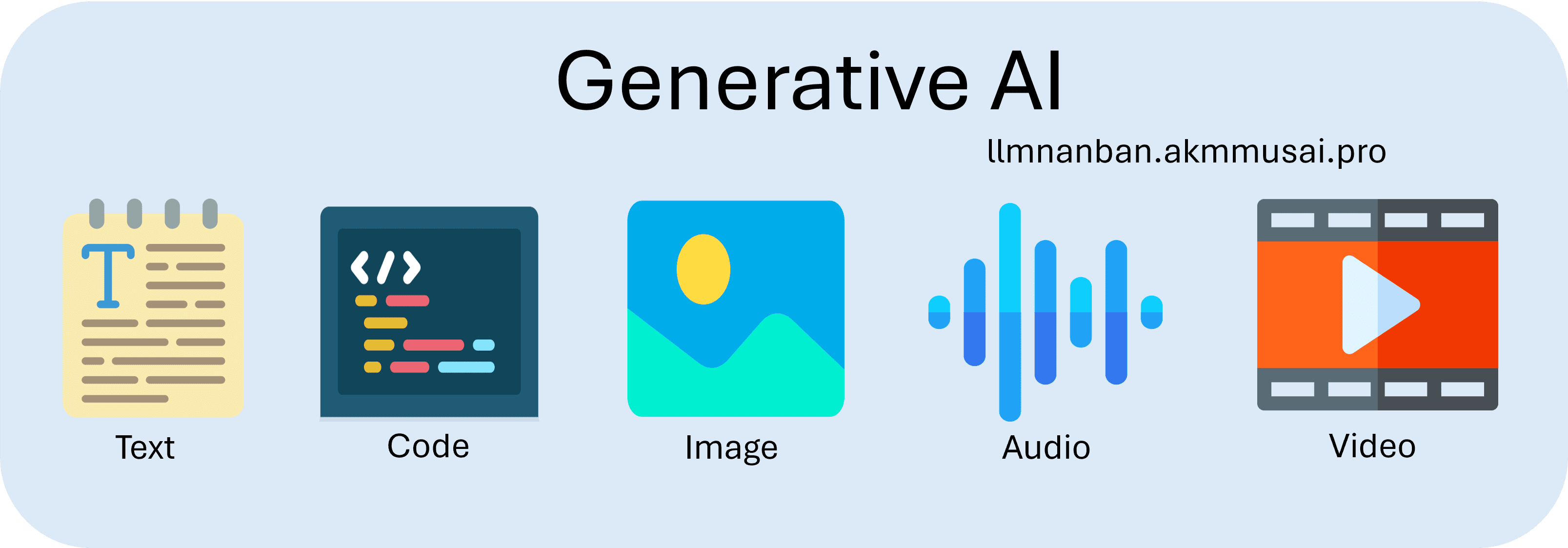🧱 Generative AI Explained
Abstract
This chapter covers "Artificial Intelligence" (AI) and "Generative AI" briefly.
🦜 Video lecture for this chapter - Link
 Artificial Intelligence
Artificial Intelligence
Artificial Intelligence is a field of computer science which deals with building machines which can learn without being explicitly programmed. These machines use algorithms and data to learn and do tasks like reasoning, problem-solving, and decision-making which require human intelligence.
Artificial Intelligence includes several areas like natural language processing, computer vision, speech processing, machine learning and robotics.
Machine Learning (ML)focuses on developing algorithms which enable learning.Natural Language Processing (NLP)processing bridges the gap between machines and human language by developing algorithms to understand, interpret and generate natural language.Computer Vision (CV)aims to develop algorithms that allow machines to understand, interpret and generate visual information (images, videos).Speech Processing (SP)focuses on understanding and generating speech.
🦜To summarize, artificial intelligence leverages algorithms and data to offer intelligence to machines to perform tasks like reasoning, problem-solving, and decision-making that require human intelligence.
 Generative Artificial Intelligence
Generative Artificial Intelligence
Generative Artificial Intelligence or Generative AI or shortly Gen AI, is a branch of AI that focuses on creating new content, rather than simply analyzing or understanding existing data. Think of Gen AI as a creative AI artist, instead of a data scientist. Recently, there has been a notable surge of interest in generative artificial intelligence. This increased attention can be attributed to the evolution of advanced deep learning models like Generative Adversarial Networks (GANs) and Transformers.
Generative AI models are usually trained on large volumes of existing content. During training, these models analyze the patterns and relationships within this data and learn the "rules" of what makes a good poem, a realistic image, or a catchy tune. After training, the model can then generate new content which not only follows these rules but is also original and creative.
🦜 In simple terms, Generative AI models use the knowledge gained from training data (existing content) to generate new content as per the requirements.

As shown in the figure, Generative AI is at the intersection of machine learning, natural language processing, computer vision and speech processing.
Generative AI can create various types of content, including:
Text: Poems, code, scripts, musical pieces, emails, letters, etc.Images: Realistic photos, paintings, landscapes, portraits, etc.Audio: Music, sound effects, speech, etc.Video: Short clips, deepfakes, etc.

Some of the popular examples of Gen AI across different media are
Text-
ChatGPT is one of the most popular chatbots introduced by OpenAI, a startup popular for its generative models across different media. ChatGPT has attracted millions within a few weeks of its launch and has brought immense popularity to LLMs.
Image-
DaLLE-3 introduced by OpenAI is a powerful image generation model that can create stunning and realistic images from text descriptions. DALL-E 3 is a versatile tool for artists, designers, and anyone who wants to bring their imagination to life.
Audio-
OpenAI’s Jukebox is a powerful music-generating AI and it can generate minute-long samples in diverse styles like pop, classical, and even singing. It learns from existing music, then uses that knowledge to create fresh tracks, influenced by artist, genre, or even lyrics you feed it.
Video-
Synthesia is an AI-powered video creation platform that lets you create realistic videos starring AI avatars from text prompts. It's a great way to create engaging videos for various purposes like marketing etc.
These are just a few examples of Gen AI across different media. As this technology continues to evolve, we can expect even more innovative and groundbreaking applications that push the boundaries of creativity and redefine the way we interact with content. Generative AI is still a relatively new technology, but it has the potential to revolutionize many different industries including content generation, entertainment, healthcare, art, and more.
